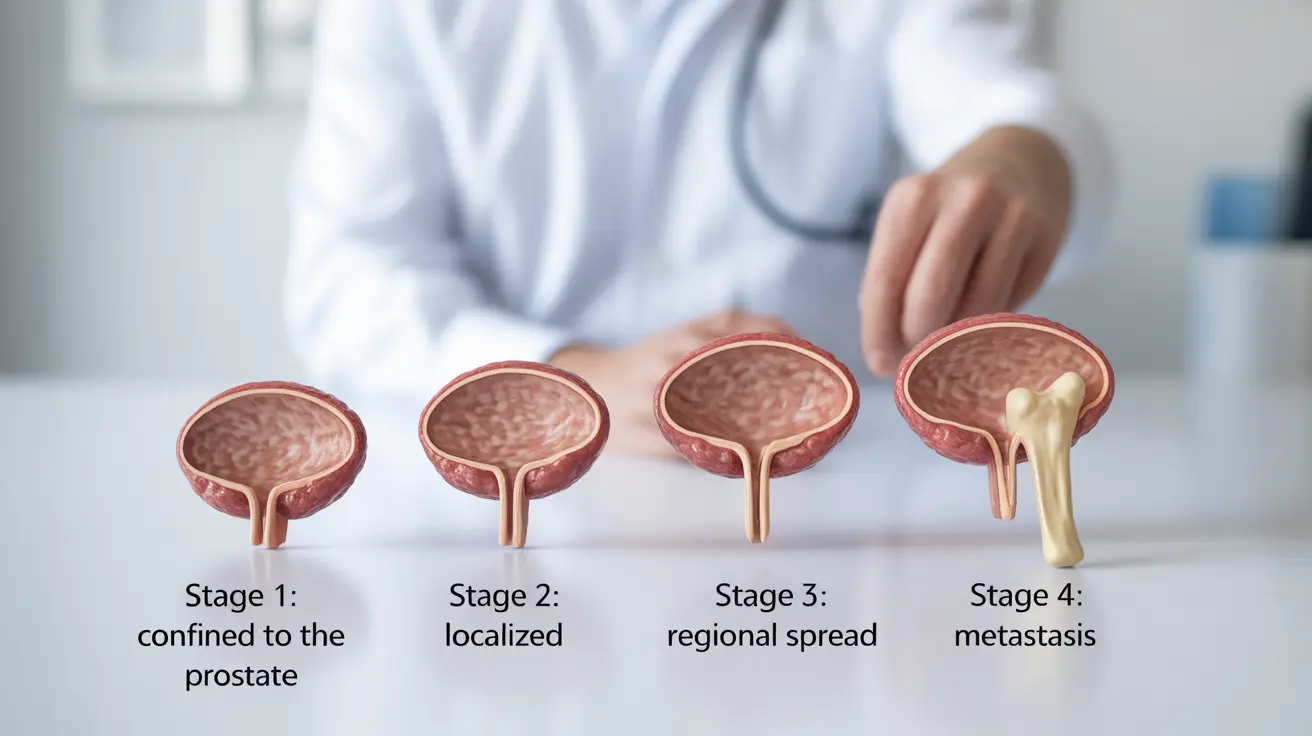Understanding prostate cancer stages is crucial for both patients and healthcare providers, as it helps determine the most effective treatment approach and potential outcomes. This comprehensive guide explains the four main stages of prostate cancer, how they're determined, and what they mean for treatment and survival.
Understanding Prostate Cancer Staging
Prostate cancer staging is a systematic way to describe how far the cancer has spread and its severity. The staging process involves multiple factors, including physical examinations, imaging tests, laboratory results, and tissue analysis.
The TNM Staging System
Healthcare providers use the TNM system to determine prostate cancer stages. This system evaluates three key components:
- Tumor (T): Size and extent of the main tumor
- Nodes (N): Whether cancer has spread to nearby lymph nodes
- Metastasis (M): Whether cancer has spread to other parts of the body
Detailed Breakdown of Prostate Cancer Stages
Stage 1 Prostate Cancer
Stage 1 represents the earliest form of prostate cancer. At this stage:
- Cancer is confined to the prostate gland
- Tumors are too small to be felt during examination
- PSA levels are typically low
- Cancer cells appear well-differentiated under microscopic examination
Stage 2 Prostate Cancer
In stage 2, the cancer remains confined to the prostate but shows signs of growth:
- Tumors may be large enough to be felt during examination
- PSA levels are typically moderate
- Cancer may be present in both sides of the prostate
- No spread beyond the prostate gland
Stage 3 Prostate Cancer
Stage 3 represents locally advanced prostate cancer:
- Cancer has broken through the prostate capsule
- May involve nearby structures like seminal vesicles
- Has not spread to lymph nodes or distant sites
- PSA levels are typically elevated
Stage 4 Prostate Cancer
Stage 4 is the most advanced stage:
- Cancer has spread beyond the prostate area
- May involve nearby organs
- Can spread to lymph nodes
- May have metastasized to bones or other distant organs
Treatment Options by Stage
Treatment approaches vary significantly depending on the cancer stage:
Early-Stage Treatment (Stages 1 & 2)
- Active surveillance
- Radical prostatectomy
- Radiation therapy
- Brachytherapy
Advanced-Stage Treatment (Stages 3 & 4)
- Hormone therapy
- Chemotherapy
- Targeted therapy
- Immunotherapy
- Combination treatments
Survival Rates and Prognosis
Prostate cancer survival rates vary by stage. Five-year survival rates are:
- Nearly 100% for localized cancer (Stages 1 & 2)
- About 95% for regional spread (Stage 3)
- Approximately 30% for distant spread (Stage 4)
Frequently Asked Questions
What are the characteristics of the 4 stages of prostate cancer?
Stage 1 is confined to the prostate with small tumors and low PSA levels. Stage 2 shows larger tumors still confined to the prostate. Stage 3 involves cancer breaking through the prostate capsule. Stage 4 represents cancer that has spread to distant parts of the body.
How is the stage of prostate cancer determined using the TNM system?
The TNM system evaluates the tumor size (T), lymph node involvement (N), and presence of metastasis (M). Doctors combine these factors with PSA levels and Gleason scores to determine the overall stage.
What treatment options are available for each stage of prostate cancer?
Early stages often use active surveillance, surgery, or radiation. Advanced stages typically require hormone therapy, chemotherapy, and other systemic treatments. Treatment plans are individualized based on specific factors and patient preferences.
What is the survival rate for prostate cancer at each stage?
Early-stage prostate cancer has excellent survival rates near 100%. Regional spread maintains good outcomes around 95%, while distant spread (Stage 4) has lower survival rates around 30% over five years.
How do PSA levels, Gleason scores, and grade groups affect prostate cancer staging?
PSA levels indicate potential cancer activity, Gleason scores measure cancer cell appearance and behavior, and grade groups help categorize cancer aggressiveness. Together, these factors help determine the cancer stage and guide treatment decisions.




